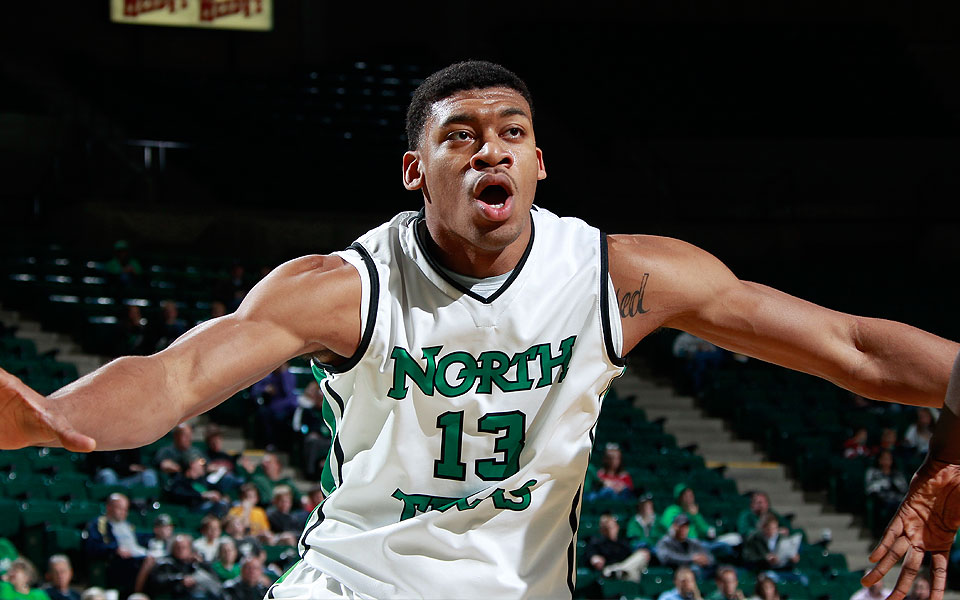NBA Draft Preview: Plotting the power forwards
Based on need alone, it would seem obvious for the Nets to look for a power forward in the draft. Reggie Evans, Kris Humphries and Mirza Teletovic all got a crack at the job last season, and while they all bring something unique to the table, they all also have gaping flaws in their games. Fans and analysts alike have called for the team to give Andray Blatche an opportunity to prove himself next to Brook, although we have yet to see how successful that duo would be for long stretches. (Defense is still half of the game.) There’s also the small matter of resigning Blatche, even if all signs are pointing in that direction.
Given their need and the limited flexibility with which they can otherwise acquire a starting caliber power forward, will the Nets draft a develop a player who can become the long-term solution? The outlook seems a bit bleak. The power forward crop isn’t deep where the Nets are picking; in fact, their best bet might be to try and turn one of the many centers on the board into a four. Here’s how the natural power forward group shakes out:
Tony Mitchell, North Texas (So) - 6’9, 236
Positives:
- Long (7’3 wingspan) and athletic (38” max vert)
- Good rebounder (8.5 rpg as a sophomore) and shotblocker (2.7 bpg)
- Lottery talent
Negatives:
- Sharp decline in numbers from freshman to sophomore seasons
- Missed two years of college due to academic issues
- Still raw as a player
How he fits:
In this draft, Mitchell is almost uniquely suited to the style of play Jason Kidd has advocated since taking over as coach because he can rebound, defend and get out in transition. Depending on which Kris Humphires (if any) shows up this season, Mitchell would probably be the best defensive power forward on the roster, and he’s more than capable of holding his own on the glass, too, a pre-requisite of playing next to Brook. Offensively, while raw and inconsistent he can finish inside and has the ability to step outside and hit a jumper. Mitchell has the tools to compete for minutes from day one; the question is whether he’s mentally prepared for that challenge.
CJ Leslie, North Carolina State (Jr) - 6’9, 207
Positives:
- Elite athlete (40.5” max vert)
- Length (7’2” wingspan) and athleticism allows him to guard three positions
- Raw, but has improved each season in college
Negatives:
- Tweener—small forward size and weight, but doesn’t have a perimeter game
- Limited on the offensive end
- Needs to add bulk and strength
How he fits:
Leslie is similar to Mitchell in that he relies on his athleticism to impact the game. At this stage in his development, Leslie’s best fit is as a small ball four. He’s a decent rebounder, but he won’t do enough in the paint to protect Brook or Blatche. The Nets would likely have to separate him and Wallace, though, as neither have enough offense to keep the defense honest.
Grant Jerrett, Arizona (Fr) - 6’10, 232
Positives:
- Good size for the position
- One of the best shooters in the draft, regardless of position
- Capable defender
Negatives:
- Didn’t play much in college (18 mpg)
- Can he do anything other than shoot?
How he fits:
There is no question of what Jerrett is should he make it in the NBA: He’s a stretch four. By nearly any metric, he ranks as one of the best shooting prospects in this year’s draft class. While there’s a redundancy worry with Teletovic, the Nets need shooters, period. Once he gets up to speed—and that could be a year or two down the road—Jerrett is the kind of player who can make defenses pay for clogging the paint. Unlike the Steve Novaks of the world, Jerrett is a decent athlete with respectable defensive instincts and rebounding ability.
Previously: Point Guards, Shooting Guards, Small Forwards
